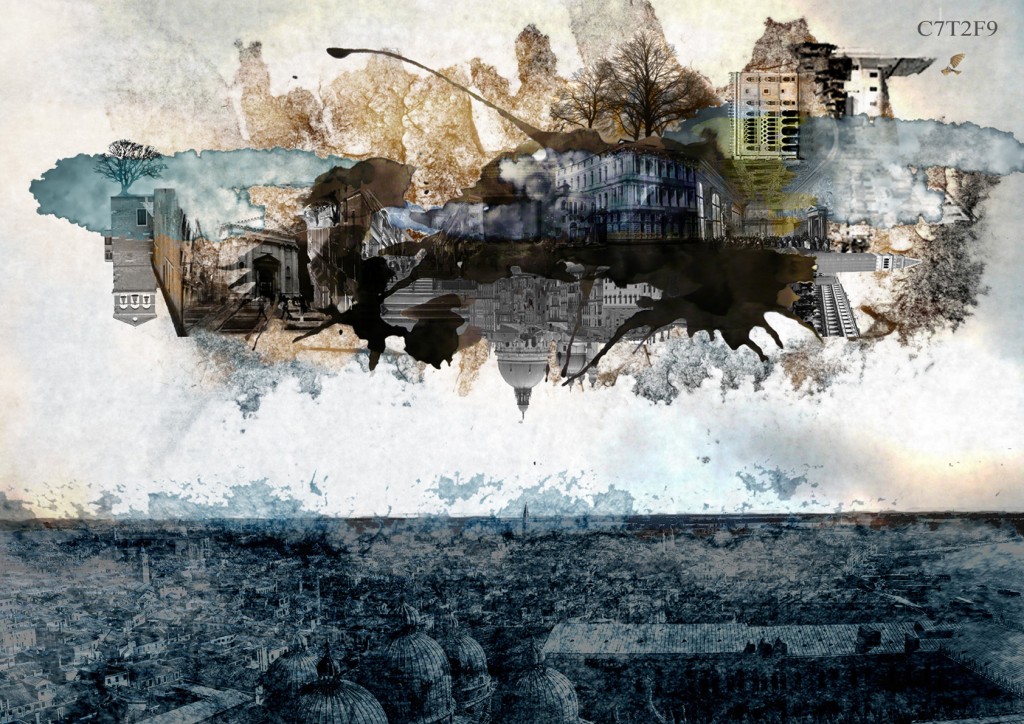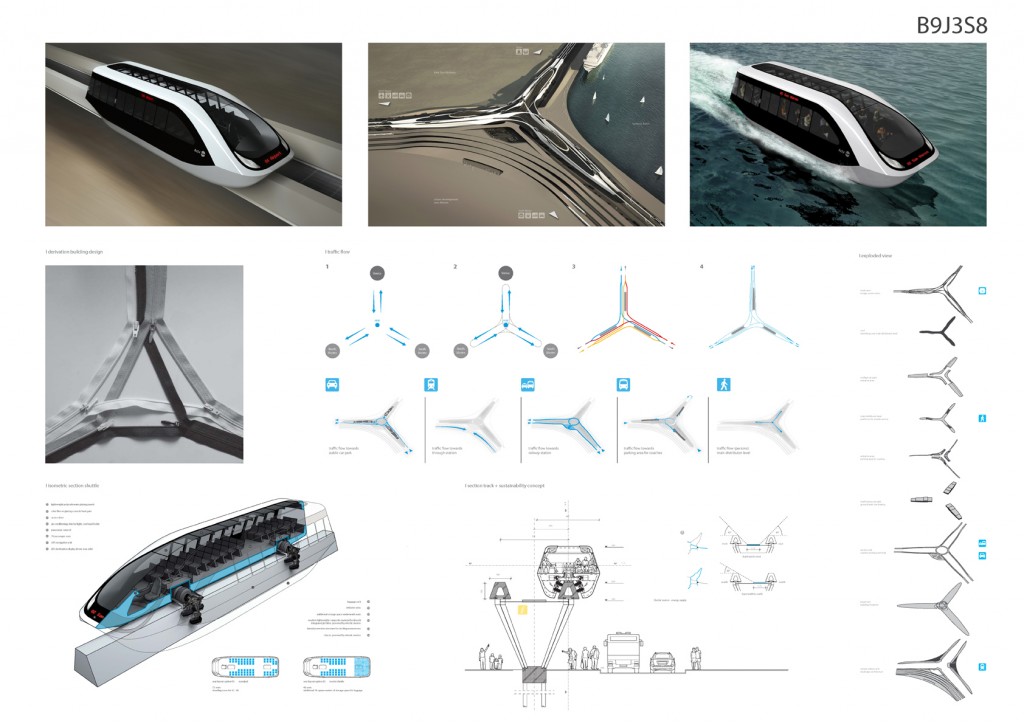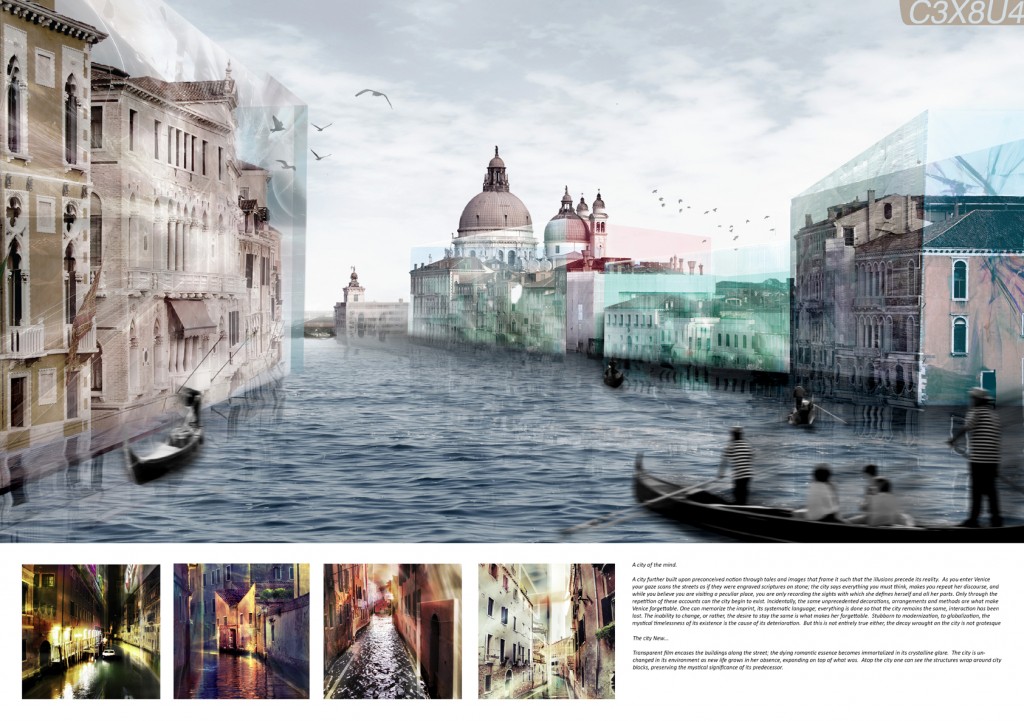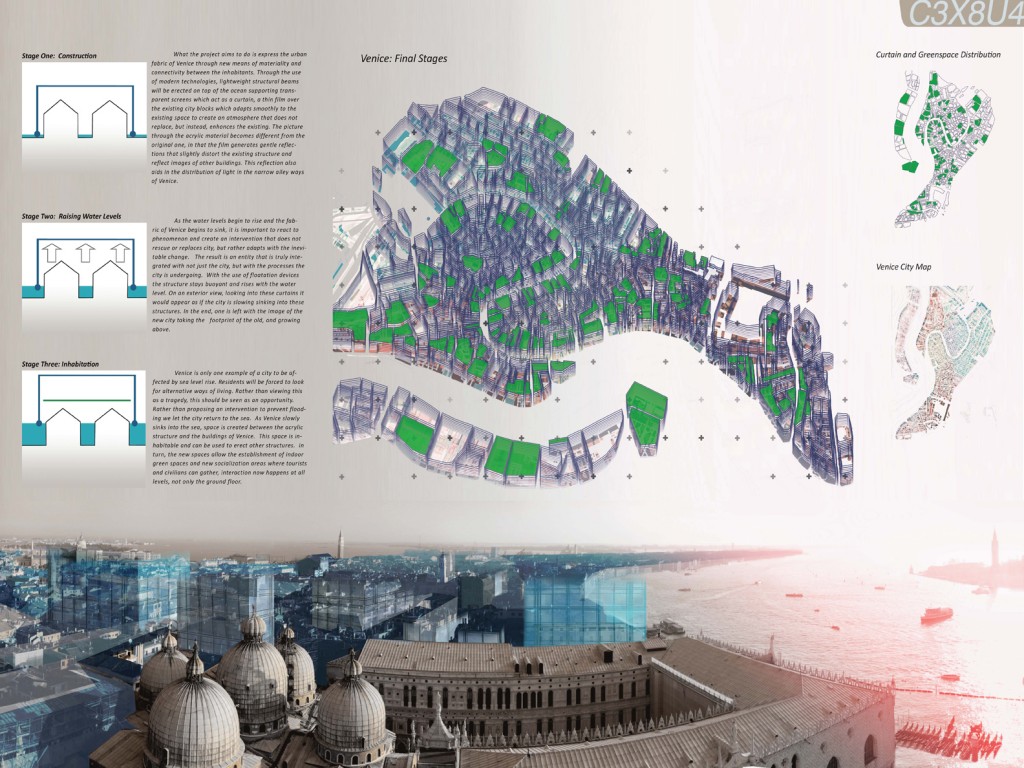Info:
Title: Venice - Code: C3X8U4Contest: Venice / 2011
By: N. Choi / C. Portillo / A. Chow / J. Kwok / A. Kusch
Views: 2683 Likes: 0
Votes:
BJARKE INGELS10 NERI OXMAN6 ELENA MANFERDINI6 MARIA LUDOVICA TRAMONTIN8 BOSTJAN VUGA46.8
Venice
A city further built upon preconceived notion through tales and images that frame it such that the illusions precede its reality. One can memorize the imprint, its systematic language; everything is done so that the city remains the same, interaction is lost. The inability to change, or rather, the desire to stay the same is what makes her forgettable. Stubborn to modernization, to globalization, the mystical timelessness of its existence is the cause of its deterioration. However, the decay wrought on the city is not grotesque but one of beauty and elegance, as for those who have entered the city know, that at certain hours, in certain places along the street, the hint of something unmistakable rare, perhaps magnificent comes to light.
With this in mind, our concept calls for a new system that interacts with the existing blanket of the city, a language that permits embracing the Venetian urban environment through new means of materiality without undermining the historical and traditional aspects of the city. The proposal calls for the installment of transparent films encasing the existing build form along the street; the dying romantic essence becomes immortalized in its crystalline glare. The city is unchanged in its environment as new life grows in her absence, expanding on top of what was. The transparent screens act as a curtain, serving as a thin film over the existing city blocks which adapts smoothly to the existing space to create an atmosphere that does not replace, but instead, enhances the existing.
In this way the city is recognized not only as just a being, but rather as an individual entity perceived by its inhabitants. Through our proposal we hope not only to form a connection between the new and the old but also between the individual-insider and outsider-and the city. The proposal seeks to form a greater connectivity between the social interaction of the inhabitants and their relationship with the city. Through the use of modern technologies, the curtain acts as screens during the night, which the moments experienced by the inhabitants in the city creating a new social network. It would invite the eye and the ear to greater attention and participation. Through the spectacle of light, both during the day and at night, the sensuous grasp upon such surroundings would not merely be simplified, but also extended and deepened. In the end we are left with an image of the city which is itself being tested against the filtered perceptual input in a constant interacting process. Thus the given reality of the city may vary significantly between different observers.
As Venice slowly sinks into the sea, we suggest that remnants of the urban fabric will survive, with their lower levels flooded. As new space is created between the acrylic structure and the buildings of Venice connection routes are reestablished at higher levels. In turn, an environment where communication and interaction occurs at all levels is created. The space is inhabitable and can be used to erect other structures. Furthermore, the new spaces allow the establishment of indoor green spaces and new links are formed between socialization areas where tourists and civilians can gather. The intervention therefore suggests a proposal where a new dimension is explored, the sky, thus travel becomes released, it is no longer restrained to the many canals that cut through the city; movement becomes free.
By exploring the new boundaries we create a city that is flexible, buildings previously rooted to the ground, or the small islands that make up Venice, are now free.
Rather than imagining an entirely new system, we propose an intervention where the individual has the power to change the frame of the city to fit changing needs, the course of these structures is not fixed but always in flux. What we seek is to create not a final but rather an open-ended order, capable of further development. It provides a way of linking the urban fabric without interrupting the city’s experience, and it enhances a sense of belonging and participation.
Info:
Title: Venice
Time: 7 giugno 2011
Category: Venice
Views: 2683 Likes: 0
Tags: Hong Kong , Independent Commission Against Corruption , Outdoors , Rafael Hui , Raymond Kwok , Recreation , Sun Hung Kai Properties , Venice








